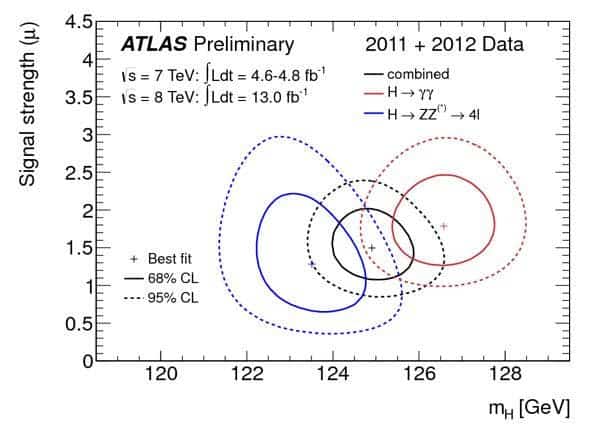The discovery of the Higgs boson is the most monumental find in physics of the year and possibility since the turn of the new century. Also known as the God particle, the Higgs boson is an elemental particle believed to be responsible for infusing all matter with mass. It’s been theorized for 50 years, but only after the technology was sufficiently advanced to prove or disprove its existence was the Higgs boson finally sealed this July, when the ATLAS team at CERN – the site of the Large Hadron Collider, the pinnacle of human science – finally found proof. Since then, however, more and more data has pilled up and a puzzling discrepancy in measurements is currently hinting towards two different Higgs masses. Perplexed scientists aren’t yet sure of these are simple statistical glitches or whether in fact, we can discuss the possibility of two different Higgs bosons.
To find the Higgs boson, physicists at CERN smashed protons at enormous energies, which caused a slew of particles to form and splatter like shrapnel. Among this shrapnel, sometimes the Higgs boson would surface – only in a few collisions out of millions or billions, though – before it would almost instantaneously decay into another particle. The Higgs can be detected in two way or two pathways: One channel decays into two characteristic photons while another creates four particles known as leptons. Each path offers a value of mass, however, the two are different. Although the discrepancy is just slight, nevertheless it shouldn’t be present at all.
The first pathway rends a mass of 123.5 GeV (giga-electron volts), the other at 126.5 GeV or 126 times the mass of a proton. Some physicists explain this peculiar phenomenon by inferring we’re simply dealing with two different Higgs bosons, each with a very similar mass, or that the difference in masses is due to a “systematic error”.

“There turns out to be a slight tension between the two masses,” said physicist Beate Heinemann of the University of California, Berkeley, who works on ATLAS, one of the LHC’s Higgs-searching experiments. “They are compatible, just not super compatible.”
Like I said, earlier, you need billions of collisions to wind up with a few Higgs boson measurements. Heinemann said the four lepton channel has only analyzed about 10 Higgs bosons and the two-photon channel about 500 Higgs. Physicists need to see the same result over and over in thousands or even millions of particle events before they are sure it’s not just a statistical coincidence. “The most likely explanation is that it’s one particle,” said Heinemann. The Standard Model of Physics, the current framework used to describe all particle interactions, doesn’t rule out a pair of Higgs however. Any of the two scenarios are possible, then.


